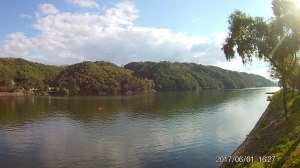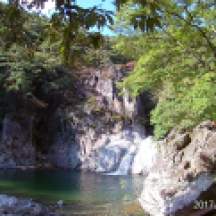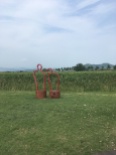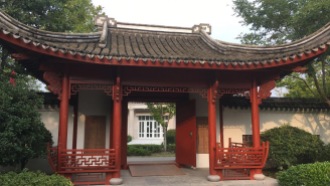On a sunny October weekend, I was lucky enough to take a trip to two new places in South Korea, Andong and Pohang. The trip was an overnight adventure planned out and taken by my school, so on a cold Saturday morning, I boarded a large travel bus full of students and those who work in the offices downstairs and headed to Andong, a small city about three hours away from Jinju.
Andong is located in the North Gyeongsang province in Korea, and is a cultural center in the country. One of the famous places in Andong is the Hahoe Folk Village, a traditional folk village located just outside of the city. Andong is also famous for its traditional folk masks, which were abundant in the folk village. In fact, part of the trip was making our own masks in the village! After completing the masks, we were given time to walk through the village before heading to lunch. After lunch, it was time to get back on the bus and head to our next destination: a Confucian temple. If I haven’t made it clear, I have a fascination with temples and Eastern philosophies, so I was happy I got to see another temple. The final stop in Andong was the Woryeonggyo Bridge, the longest wooden footbridge in Korea. The bridge was definitely a beautiful part of Andong and a great opportunity to take some photos.

Following our excursion to the bridge, it was time to head toward our hotel in the city of Pohang. We drove for over an hour, stopping off to eat dinner. The food at this restaurant was fantastic. The cook prepared me a vegetarian-friendly soup with a spicy broth, plenty of veggies, noodles, and tofu. After dinner, it was time to get back on the bus and drive to the hotel. This was my first overnight stay somewhere other than Jinju since arriving, and I was curious to see what the hotel would be like. My room reminded me of the rooms I stayed in night after night as an admissions counselor when I went from one Hilton brand hotel to another.
After settling into the hotel, myself and the others set out to find a cafe, finding a cute place down the road with an outdoor seating area on the roof. It was the perfect place to have a latte and get some writing done.
In the morning, we boarded the bus once again and went for a hike. The views were spectacular and the weather was sunny and cool. At the base of the trailhead was another Temple (woo!) and a small festival. It was a great way to spend the morning. The afternoon was spent beside the ocean at the Homigot (호미곶).  They’re in the shape of two hands, one on land and one in the sea and symbolize the coexistence of humankind. It was an incredible afternoon and my first time seeing the Pacific Ocean. Being able to touch the Pacific Ocean may not seem significant to many, but to be able to see and feel something that always felt so far away was significant for me. I feel that my moments spent next to the ocean were symbolic of just how far I have come, and that I am coexisting in a new way.
They’re in the shape of two hands, one on land and one in the sea and symbolize the coexistence of humankind. It was an incredible afternoon and my first time seeing the Pacific Ocean. Being able to touch the Pacific Ocean may not seem significant to many, but to be able to see and feel something that always felt so far away was significant for me. I feel that my moments spent next to the ocean were symbolic of just how far I have come, and that I am coexisting in a new way.

Every opportunity I have to travel Korea reinforces just how at peace I feel in making the decision to come here. Those who took the same journey told me how transformative this year would be for me, and I feel myself changing slowly and in small ways every day. I can’t wait to see what the rest of Korea has in store for me as I continue my travels in this amazing country I now call home.
************************************************************************************
Traveling Korea is a series of posts about my various trips outside of Jinju. All posts on these travels can be found under the tag #travelingkorea.












































